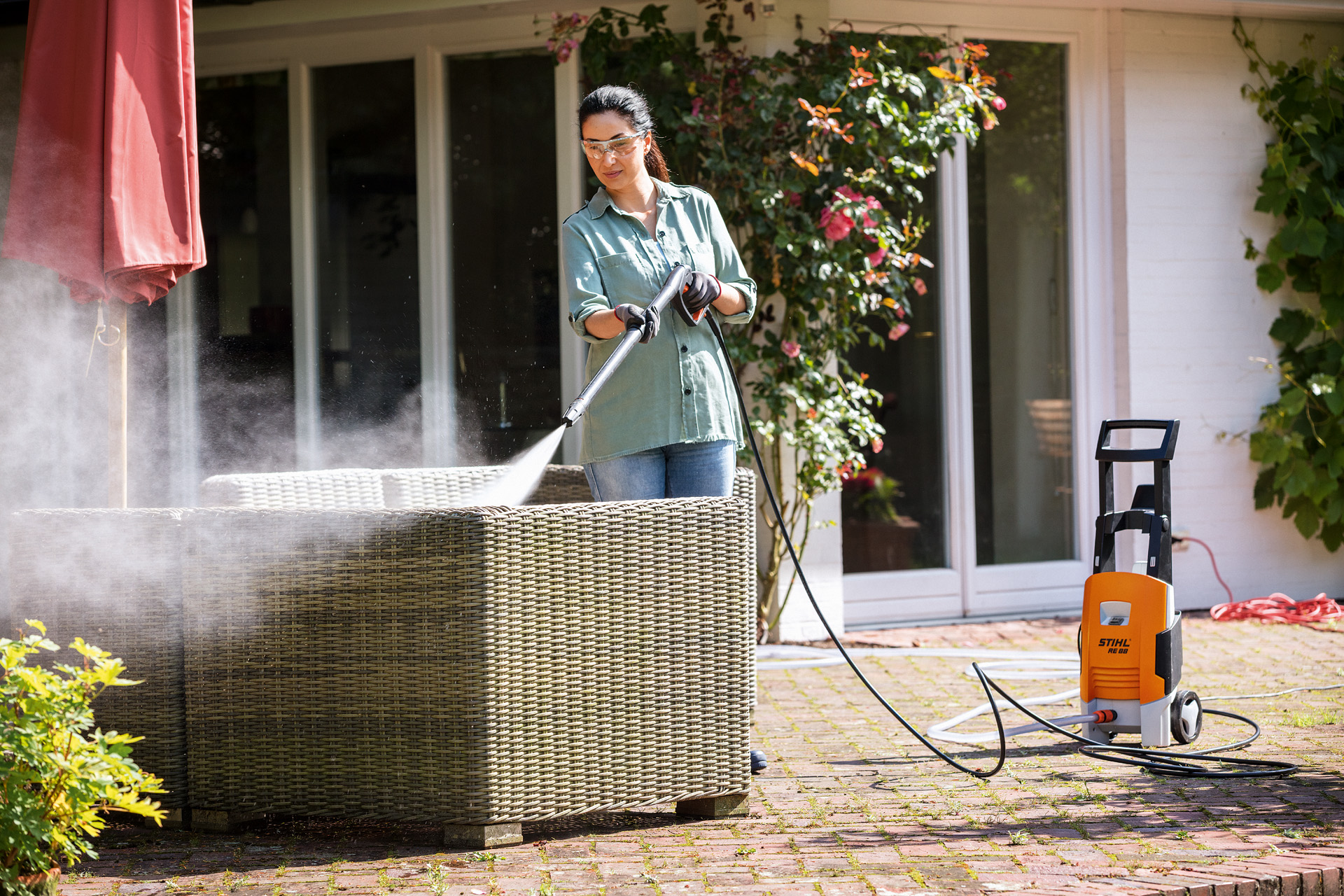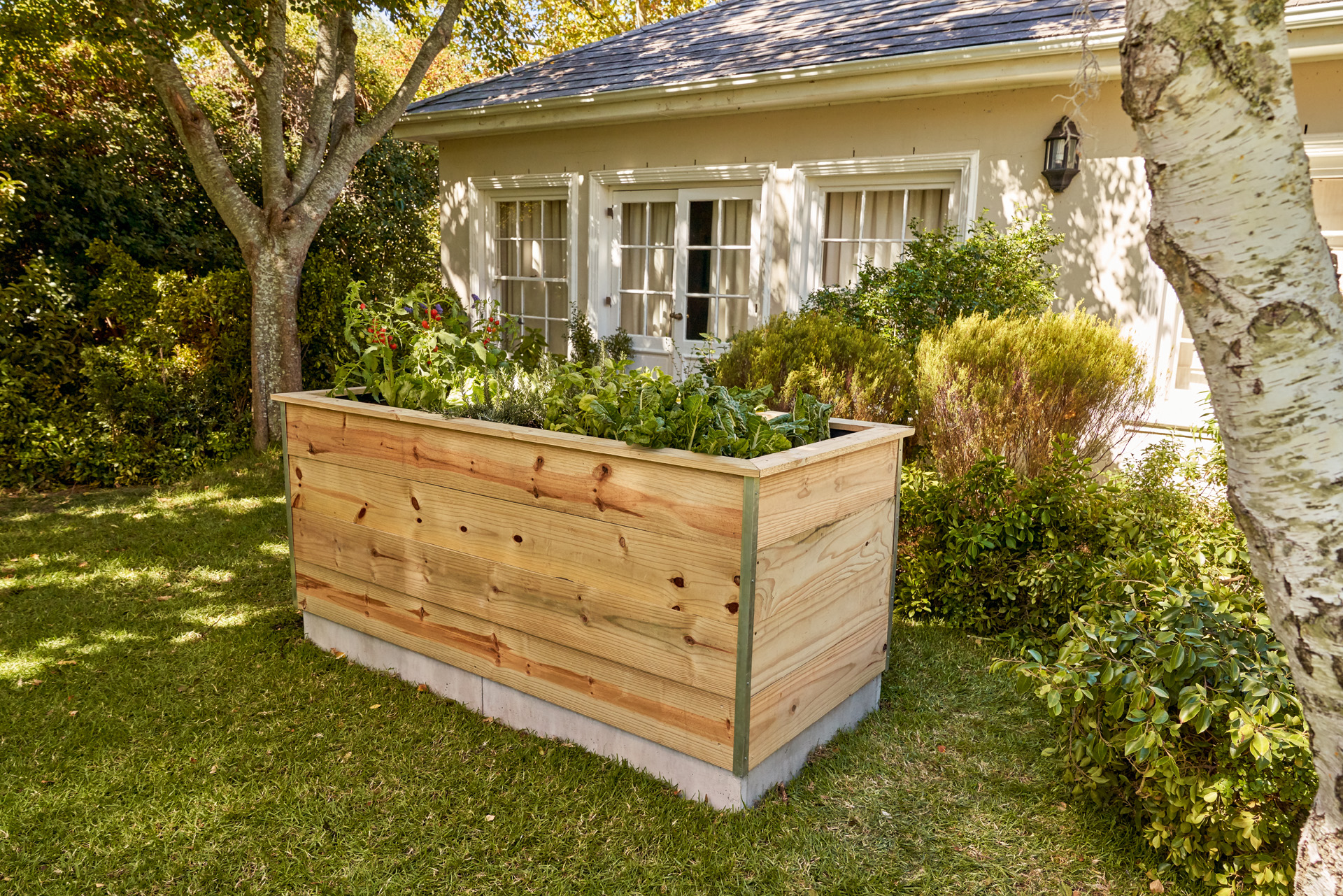How to design and plant a roof terrace
A roof terrace is a wonderful way to extend your living space outdoors – and upwards. We take you through the design and planting process.
29.06.2023

Roof terrace design: basic considerations
In an urban setting, a roof terrace makes a much more intimate retreat than a balcony; even for those living in a house with a garden, a rooftop space is still a much-appreciated addition, offering a new vantage point and expanded growing space. A roof terrace can add value to your property and significantly improve your quality of life.
The first thing to find out is how strong your roof is and whether you need planning permission. A structural engineer or surveyor will tell you what you need to know. Don’t be tempted to skip this step; your plans are likely to add significant load to the roof, particularly once you start adding planting or greened areas. So you need to be sure if the structural conditions allow for roof vegetation and whether the substructure can support the additional weight.
Next, you need to consider what you want from the roof garden. Is it a relaxation space; should it be child-friendly; will there be a dining area? These considerations will guide your choices.
To design the best possible roof terrace for your needs, ask yourself the following questions:
- How do I want to use the roof terrace?
- How much do I want to invest?
- How much time do I have?
- How sunny/shady is the roof?
- How big and sturdy is the roof?
Designing your dream roof terrace
With a little effort and imagination, your roof terrace can become a fully-fledged living area, depending on the space available and the load-bearing capacity of your building. With careful planning, you can cleverly design different areas so that you can enjoy your rooftop retreat all year round.
Roof terrace shade structures
Your roof terrace is likely to be in an exposed position that gets a lot of strong sun, so we recommend adding roofed areas and structures that provide shade so that you can enjoy your roof terrace even at the height of summer. As an added bonus, you’ll also have shelter from sudden showers, as well as somewhere clean and dry for any furniture or other equipment.
Higher ground is always windier, so don’t forget to include windbreaks in your design. A parasol may be sufficient in some situations, but it is not ideal in strong winds. A firmly-anchored shade sail offers protection from the sun and from light rain, while a canopy with an aluminium frame, glass and integrated sun protection is a robust, long-lasting option. Another good long-term option is a wooden pergola with climbing plants or a waterproof fabric covering. This must be made from weatherproof wood that will not rot or mould: Douglas fir, pine, or spruce are popular, highly suitable materials for roof terrace structures.
Roof terrace flooring
The floor covering on your roof terrace will face the elements all day, every day. Your choice of flooring design is likely to be based on your personal taste, the cost, and the material’s durability.
If your roof garden is large, you can put together a design that uses multiple types of flooring for a zoning concept: just divide the space into different areas depending on how you wish to use it and select flooring that suits the purpose of each individual area.
There are various materials that are suitable for roof terrace flooring:

Wood: Wooden flooring looks and feels good in a roof garden and only heats up a little even in strong sun – a significant advantage for those who like to go barefoot. To make sure the floor lasts a long time, the wood should be laid on a substructure and treated appropriately according to the wood variety. Native larch and Douglas fir should be sealed to protect against discolouration and rotting, for example; otherwise, a special terrace oil or an oil that suits the type of wood you have used will protect the boards against UV light and moisture.

WPC: Wood Plastic Composites (WPC) are blended materials that usually contain up to 60% wood shavings and up to 40% plastic. This composition means that a roof terrace design using WPC flooring is more weatherproof and more robust than pure wood, though WPC is laid in a similar way on a substructure to prevent waterlogging. This type of flooring is easy to wash, and even stubborn dirt can easily be removed with a high-pressure cleaner.

Tiles: Exterior tiles are a durable, low-maintenance option for roof terrace flooring. You will need to start with a completely level subsurface that will not move or slip later – otherwise, the tiles will be subjected to stress and will eventually crack. One significant design advantage of using tiles is that there is a huge range of colours and patterns available, so you can give your creativity free rein. Not all tiles are suitable, though, and you should ensure that the tiles you use are slip-resistant to minimise the risk of injury.

Lawn: Think having a roof garden means forgoing a lawn? Think again! To make your roof terrace into a green space, you can use high-quality artificial lawn laid on any surface. Make sure it is permeable to water and UV-resistant. It may also be possible to incorporate real grass in your roof terrace design, depending on the load-bearing capacity of your garden. Regular lawn care and a subsurface that imitates real garden soil are crucial if you want your natural grass to thrive. Our guide will tell you how to lay a lawn.
Privacy for your roof terrace
Suitable screening on your roof terrace will help you avoid the curious gazes of your neighbours. There are lots of possibilities here, and the right choice will create privacy and look good. Planted raised beds and planters containing hedging or taller plants bring nature straight to your rooftop. Outdoor screens, bamboo, privacy netting and trellises with climbing plants will also help screen off your roof terrace.
Roof terrace furniture and decoration
If you design your roof terrace to be cosy and comfortable, you’ll soon find you have a much-used multifunctional space with a real wow factor. Sofas, hammocks, loungers and rocking chairs create an inviting haven for relaxation, while a welcoming dining area is ideal for enjoying breakfast al fresco or warm evening barbecues. Cushions, rugs, fountains and atmospheric lights such as chimineas, storm lamps and lanterns add beautiful touches and create a special mood for your roof terrace. If you're feeling creative you could even try making your own wooden lantern.

The garden furniture on your roof terrace should be weatherproof so you can continue to enjoy it for a long time to come. Plastic and metal furniture is durable and can be cleaned easily with a high-pressure cleaner, while weather-sealed wooden furniture feels warm and snug and can last many years with regular care. You could even dress up your space with a homemade piece to be proud of! Why not check out our do-it-yourself ideas for some inspiration?
Drainage
A flat root terrace needs controlled drainage to ensure your feet stay dry, prevent water from accumulating and protect the flooring and furnishings from moisture damage. It also prevents additional weight from collected rain. Make sure your roof terrace design includes an adequate built-in drainage system that works correctly.
Planting a roof terrace
Whether you use them decoratively, for privacy screening or to partition garden zones, plants are always great on a roof terrace. As you think about the planting design for your roof terrace, bear in mind the additional structural load from soil in planters and beds and the specific weather conditions.
To make your roof garden space a pleasure to be in all year round, use a mix of robust, evergreen winter hardy plants and annual summer flowers. That way, your roof terrace will be alive with colour and sweet scents in summer, while frost-resistant green shrubs and perennials keep the beauty happening in the colder months.

Roof terrace design: suitable plants
The more varied the types and sizes of the plants you choose, the easier it will be to imitate nature on your roof terrace. Remember, though, plants in planters cannot access water and nutrients independently and so are dependent on regular care.
Shrubs in containers can protect against the wind, create privacy on your rooftop and offer shade. Frost-hardy shrubs are easy to care for, look good in winter, and are often delightfully lush and colourful at the height of the season. Evergreen box and tall-growing bamboo (fargesia varieties) are ideal shrubs for roof terraces as they are easy to care for, though they require frequent watering in very strong sun. Standard roses will also thrive in planters if you want to enjoy beautiful blooms on your roof terrace.

Many small-growing trees suitable for growing in planters could also be planted on your roof terrace: acers, English yew and dwarf pine are frost-resistant and can survive outside all year round with a little help. Mediterranean plants such as fig or olive trees add summer fragrance and ambience but need warmer places to spend the cold winter months.

Perennials and herbs are also interesting to include in your planting design. Mediterranean rosemary, thyme and oregano love the sun and thrive on roof terraces. They are also hardy and need only be covered with winter fleece during the harshest frosts. Lavender, with its unmistakable fragrance, is another reliable choice and gets along well with baby’s breath.
Make your rooftop haven welcoming for wildlife, too: herbs and native flowers attract butterflies, bees and other insects, offering them precious nectar and pollen to help them survive.
Our article about a wildlife-friendly garden offers many tips that you can also use to design a roof terrace that supports biodiversity in your area.
Summary: roof terrace design
- A roof terrace will improve your quality of life and could increase the value of your property.
- Before designing your roof terrace, you should ascertain the load-bearing capacity of the building and check for planning permission and building regulation requirements. You should also verify that the drainage system is working correctly.
- Weatherproof flooring is essential for any roof terrace. Wood, WPC and non-slip tiles are common choices. Natural lawn may also be an option under certain circumstances.
- Privacy screens and roofed structures will create an intimate atmosphere on your roof terrace and protect you from the wind, sun and rain.
- Furniture and decorative elements made from weatherproof materials are ideal for a roof terrace. Plastic and metal are easy to care for, while wooden furniture creates a cosy atmosphere.
- You should add greenery to your roof terrace with a mixture of robust, evergreen plants and annual summer flowers. Insect-friendly plants on the roof offer an additional source of nutrition and living space for bees and butterflies.


